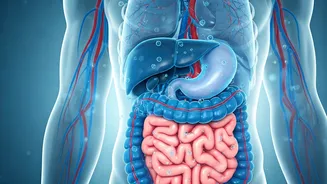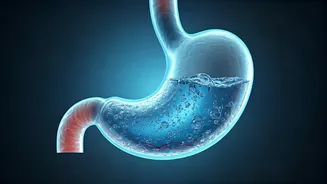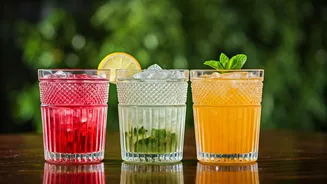Water Absorption: The Basics
Water absorption is a complex physiological process where the body takes up water and moves it into the bloodstream. The speed of absorption depends on multiple
elements, including the amount of water consumed, the composition of the water, and even the physical state of the individual. When you drink water, it initially enters the stomach. From the stomach, the water then moves to the small intestine, the primary site of absorption. Here, water molecules pass through the intestinal walls and enter the bloodstream. The entire process isn’t instantaneous; it involves multiple biological pathways and interactions. The rate at which the body absorbs water isn't constant. It can fluctuate depending on several factors, indicating that optimizing hydration isn’t just about drinking a specific quantity but also paying attention to how and when you drink.
Factors Affecting Absorption
Several factors affect how quickly your body absorbs water. The speed can vary based on individual differences such as age, gender, and overall health. For instance, people with certain medical conditions might have altered absorption rates. The composition of the water itself also matters. Water containing electrolytes may be absorbed more rapidly compared to plain water because electrolytes facilitate water transport across cell membranes. Additionally, the presence of food in the stomach can influence water absorption. Drinking water on an empty stomach tends to allow quicker absorption than drinking it during or after a meal. Furthermore, physical activity levels affect hydration. During exercise, the body loses water through sweat, potentially increasing the rate at which it absorbs water to compensate. Understanding these factors highlights the need for a personalized approach to hydration, as what works for one person might not be ideal for another.
Myth Busting: Chugging Water
A common misconception is that drinking large quantities of water very quickly, sometimes referred to as 'chugging', is the most effective way to hydrate. However, this approach is often less efficient than a more measured approach. When you drink too much water too fast, your body might struggle to absorb it all at once. Much of the water may simply pass through the digestive system and be excreted as urine without fully hydrating your cells. Moreover, excessive water intake in a short period can potentially disrupt the balance of electrolytes in your body. It is important to find a balance; overdoing it can be counterproductive. Instead of chugging water, many experts recommend taking small, regular sips throughout the day. This method allows the body to absorb water more efficiently, supporting consistent hydration levels and avoiding potential electrolyte imbalances. This approach supports a more consistent and healthier hydration strategy overall.
Optimal Hydration Practices
To optimize hydration, several strategies can be adopted. One of the most effective is to drink water consistently throughout the day, rather than waiting until you feel thirsty. Keep a water bottle with you and refill it regularly as a visual reminder. Consider the amount of physical activity you engage in and adjust your water intake accordingly. If you exercise or sweat heavily, you’ll need to drink more water to replenish lost fluids. Pay attention to the color of your urine as a general indicator of your hydration status. Light yellow urine suggests adequate hydration, whereas dark yellow indicates dehydration. Incorporating water-rich foods, such as fruits and vegetables, into your diet can also contribute to your overall hydration levels. Eating foods like watermelon, cucumbers, and spinach can provide additional hydration benefits alongside the water you drink. By combining these practices, you can create a sustainable and effective hydration routine tailored to your individual needs.










